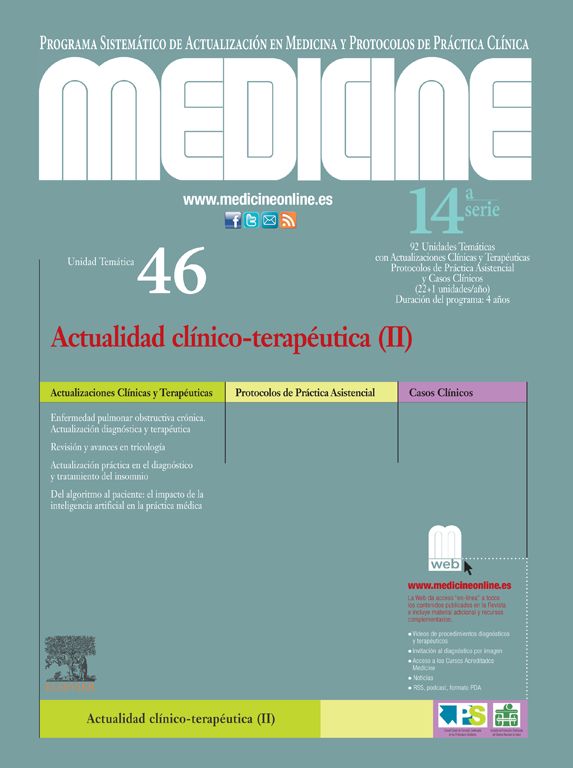En Europa, se define hipertensión arterial (HTA) como la presencia de cifras persistentemente elevadas de presión arterial sistólica (PAS) iguales o superiores a 140mm Hg o de presión arterial diastólica (PAD) iguales o superiores a 90mm Hg. En pacientes de edad avanzada se considerará objetivo de control una PAS entre 130 y 140mm Hg y una PAD entre 70 y 79mm Hg. El impacto de la reducción de la PA en el bienestar de los pacientes se debe monitorizar estrechamente, valores de PA más bajos aumentan el riesgo de eventos adversos (como lesiones por caídas). Una adecuada anamnesis en el momento del diagnóstico de la HTA, junto con la exploración física y la solicitud de exploraciones complementarias son clave. La evidencia disponible respalda la recomendación de ofrecer tratamiento antihipertensivo a los pacientes ancianos (mayores de 65 años, incluso los de más de 80 años) con una PAS igual o superior a 160mm Hg. Las medidas higiénico-dietéticas y los cambios en el estilo de vida están justificadas en todos los casos. Respecto al tratamiento médico, se establece como umbral de inicio de tratamiento una PAS mayor o igual a 140mm Hg en pacientes entre 65 y 79 años, y una PAS mayor o igual a 160mm Hg en pacientes mayores de 80 años. Es importante señalar que incluso en pacientes ancianos (más de 80 años), el tratamiento antihipertensivo reduce la mortalidad, el ictus y la insuficiencia cardíaca. Por lo tanto, no se debe negar o retirar el tratamiento a estos pacientes basándose solo en la edad.
Palabras clave
Hypertension (HT) is defined in Europe as the presence of persistently high figures of systolic blood pressure (SBP) equal to or higher than 140mm Hg, or a diastolic blood pressure (DPB) equal to or higher than 90mm Hg. In elderly patients the control target is considered to be a SBP from 130 to 140mm Hg and a DPB of from 70 to 79mm Hg. The impact of reducing BP on the wellbeing of patients should be closely monitored, as lower BP figures increase the risk of adverse events such as injury due to falls. An appropriate anamnesis at the moment HT is diagnosed is of key important, together with physical examination and the request for complementary tests. The available evidence supports the recommendation to offer antihypertensive treatment to elderly patients (over the age of 65 years, and even to those over the age of 80 years) with a SBP equal to or higher than 160mm Hg. Hygienic-dietary measures and lifestyle changes are justified in all cases. Respecting medical treatment, a threshold of SBP greater than or equal to 140mm Hg is set for patients aged from 65 to 79 years, or a SBP greater than or equal to 160mm Hg for patients over the age of 80 years. It is important to point out that even in very elderly patients (over the age of 80 years), antihypertensive treatment reduces mortality, ictus and heart failure. Treatment should therefore never be refused or withdrawn from these patients solely due to their age.
Keywords
Identifíquese
¿Aún no es suscriptor de la revista?
Comprar el acceso al artículo
Comprando el artículo el pdf del mismo podrá ser descargado
Teléfono para incidencias
De lunes a viernes de 9h a 18h (GMT+1) excepto los meses de julio y agosto que será de 9 a 15h




